This delicious dish of braised celeriac, Turkish style, is one of my favourites in winter. Delicious on its own, zeytinyağlı kereviz is even better when used to elevate your white fish dinners.
The Mediterranean and Middle Eastern cuisines excel when it comes to vegetable dishes. To me, one of their most important lessons is to focus on one ingredient at a time. Make one vegetable the star, and only add other ingredients which help bring out the flavour of your star ingredient.
When composing dishes in this way, the vegetable dishes often become the star of the dinner table. This Turkish dish with celeriac, or celery root, as its star ingredient, is certainly one of those.
What is zeytinyağlı kereviz?
Zeytinyağlı kereviz is a dish of braised celeriac which is popular in Turkey. It’s a typical seasonal dish which bases itself on the peak produce of winter.
In addition to the celeriac, sometimes known as celery root, carrot and orange are important supporting ingredients. But the celeriac, kereviz in Turkish, is certainly the star of the show!
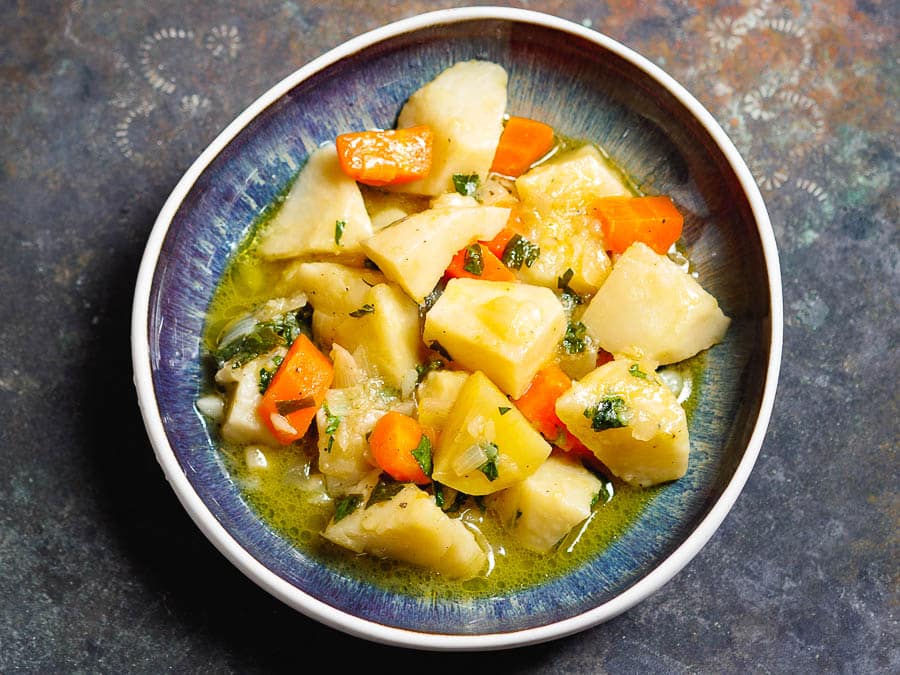
The dish is what part of what Turks call zeytinyağlı dishes, which can be translated as dishes “with olive oil”. These are vegetable dishes where the ingredients are braised in plenty of olive oil until completely soft.
As a European, cooking vegetables until completely tender went against everything I had learned about cooking growing up. But this is one of those exceptions where one really should trust the Turks! With plenty of olive oil and aromatics, these are perhaps my favourite style cooking in Turkish cuisine.
Indeed, many of my favourite Turkish dishes are made in this way, from runner beans and borlotti beans to artichokes.
How to make zeytinyağlı kereviz
Making this dish of braised celeriac couldn’t be easier. The key is to be generous with the olive oil, and to use a good quality one.
I highly recommend using extra virgin olive oil. This is what’s been traditionally used throughout the Mediterranean. Besides, much of what is sold as “regular olive oil” is in fact blended with other oils, whether noted on the packaging or not.
With extra virgin olive oil, the final result will never feel greasy, even if we’re using a significant amount. The flavour is also better. I personally use a mild extra virgin olive oil from the Aegean region.
As most zeytinyağlı dishes, this one starts with softening onions in the olive oil. Then the rest of the ingredients go in, before you leave the low heat and time to do their magic, transforming raw ingredients to a deliciously tender braise.
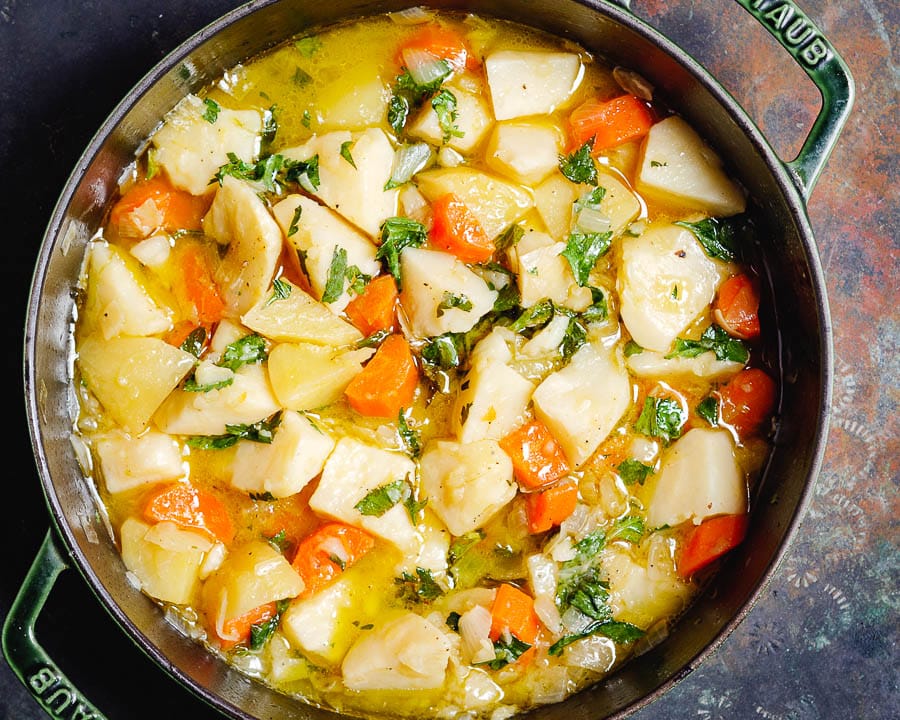
Carrots are the common secondary vegetable in this dish, but I like to add potato as well. Feel free to omit this. While some Turks may add it, many won’t.
The dish doesn’t need much liquid, but it’s composition is important. A blend of orange and lemon juice gives a beautiful sour flavour with hints of sweetness that goes perfectly with the braised celeriac.
I admit it sounded odd to me to add orange juice, but as with any traditional recipes that are tried and tested there’s no need to worry. It really works!
How to serve Turkish braised celeriac
Zeytinyağlı kereviz can be enjoyed as a vegetarian main, though in Turkey it’s usually served as a side dish.
Personally, I like to serve it with white fish. In Turkey, this usually means sea bass or sea bream, but I have no doubt it’ll be equally delicious alongside cod, haddock or whatever white fish is available where you live. I also like it with pork chops, where the tanginess of the celeriac goes really well with the fatty umami of the pork.
If you’re vegetarian and want to make a meal out of it, serve it with a legume based dish (for protein) and, if you like, a simple fresh salad. If you want to eat this only, I’d add a couple of handful of cooked chickpeas for protein. It’s by no means traditional, but should work well if you’re serving this as the only dish.
The recipe serves 3-4, depending on what else is on offer.
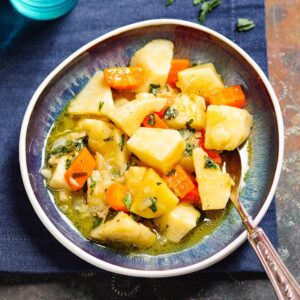
Turkish braised celeriac (Zeytinyağlı kereviz)
Ingredients
- 75 ml olive oil, I use a mild extra virgin
- 1 medium onion, finely chopped
- 1 large celeriac, peeled and cut into 3-4 cm (1-1 ½ in) pieces (c. 350-400 g/12-14 oz net weight)
- 1 medium potato, peeled and cut into 3-4 cm (1-1 ½ in) pieces (c. 125 g/4 ½ oz)
- 1 large carrot, halved lengthways and cut into 1 cm (⅖ in) pieces (c. 125 g/4 ½ oz)
- 1 large orange, juice only (c. 100 ml/⅖ cup)
- 100 ml water
- 1 Tbsp lemon juice, or to taste
- 1 tsp sugar
- leaves of celeriac, or 1 handful flat leaf parsley, finely chopped (optional)
- salt and pepper
How I make it
- Heat a thick bottomed pot over medium heat. Fry the onion in the olive oil until softened, but not coloured, 8-10 minutes. Stir regularly to ensure it doesn’t catch.
- Add the celeriac, potato and carrot. Mix well. Add the orange juice, lemon juice, sugar and water, plus plenty of salt and pepper. Bring to the boil, then turn the heat down to low. Cover and leave to simmer until the vegetables are completely soft, around 40-50 minutes, but depending on the size of your chunks. Stir a couple of times during this time, adding more water if necessary.
- Take off the heat and mix in the chopped celeriac leaves (or flat leaf parsley). Season to taste with salt and pepper and add more lemon juice if desired. Leave for another 5-10 minutes before serving.


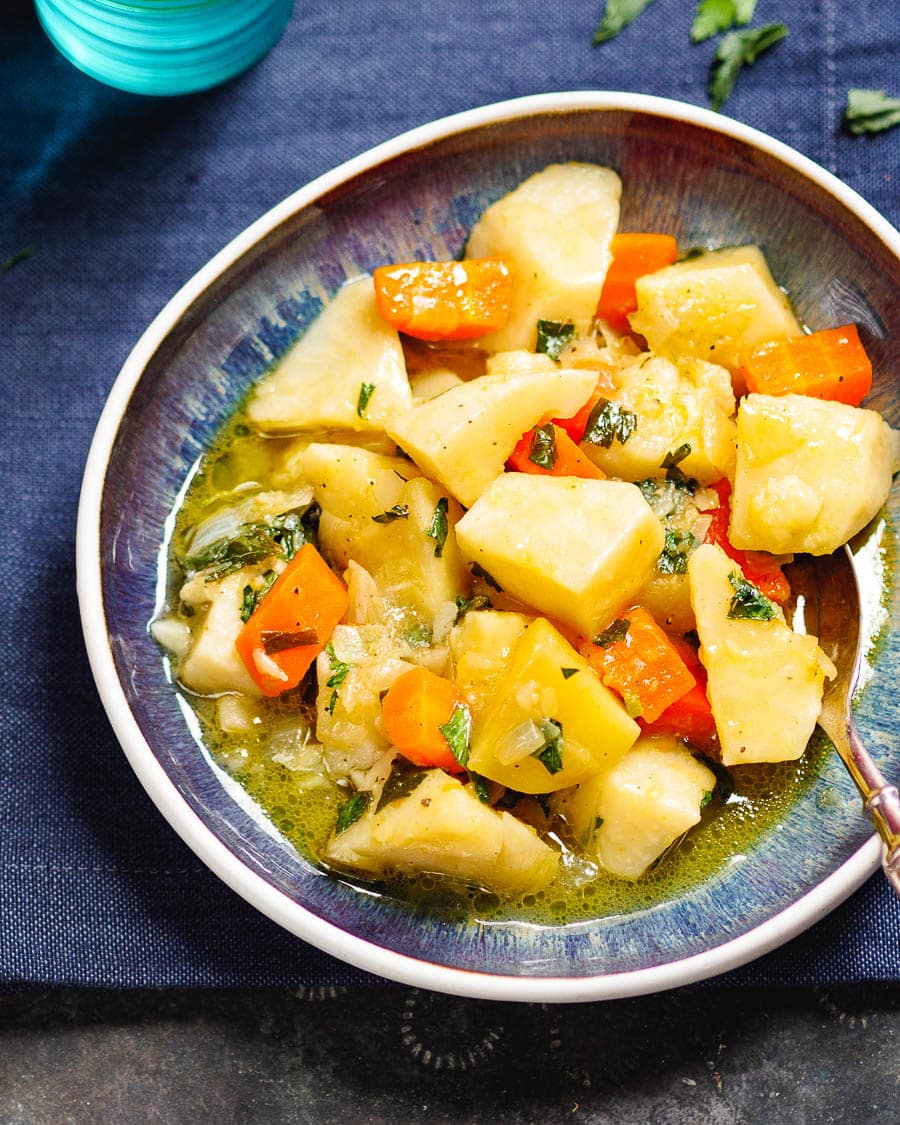
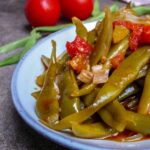
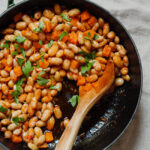
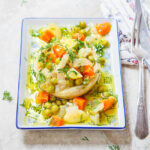


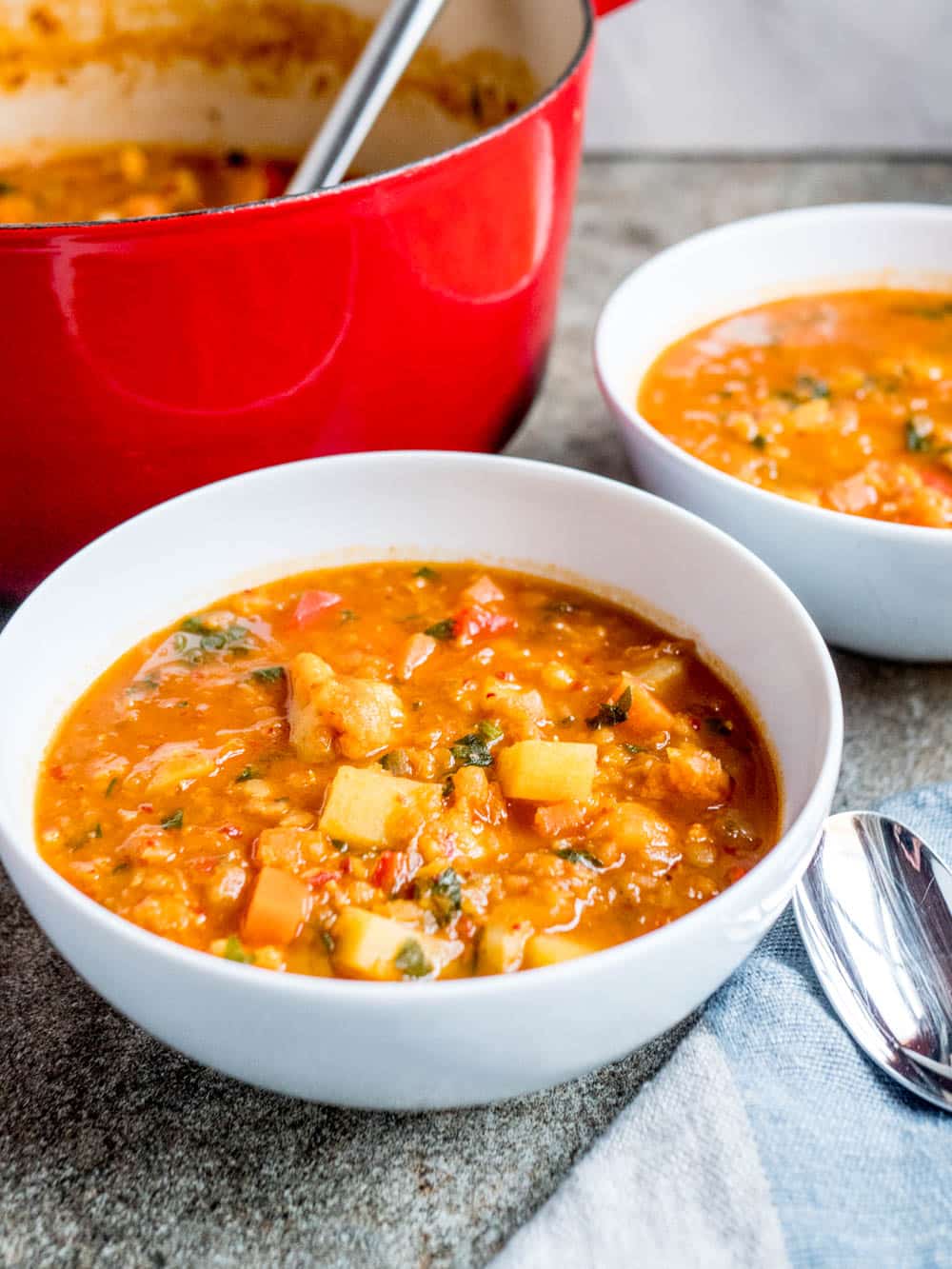
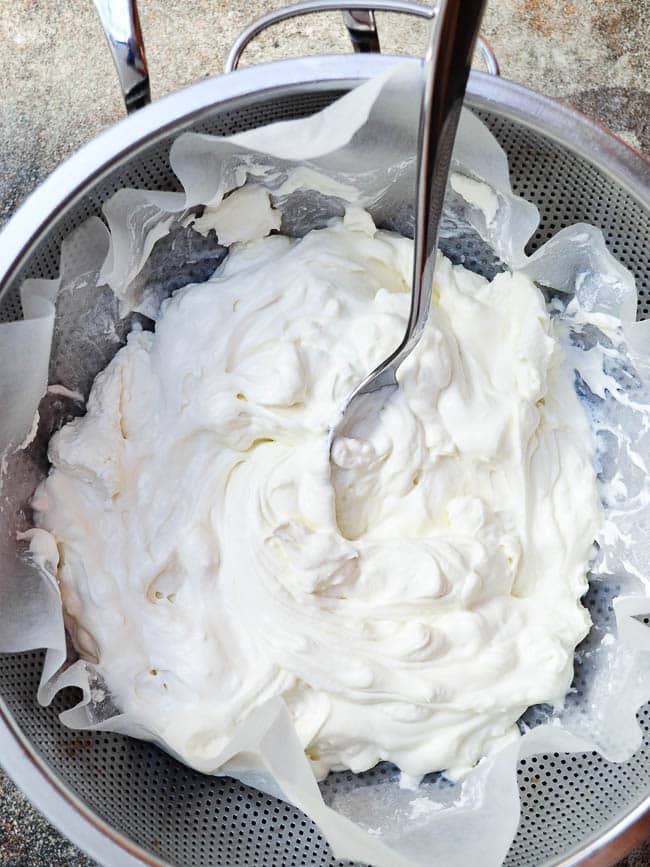
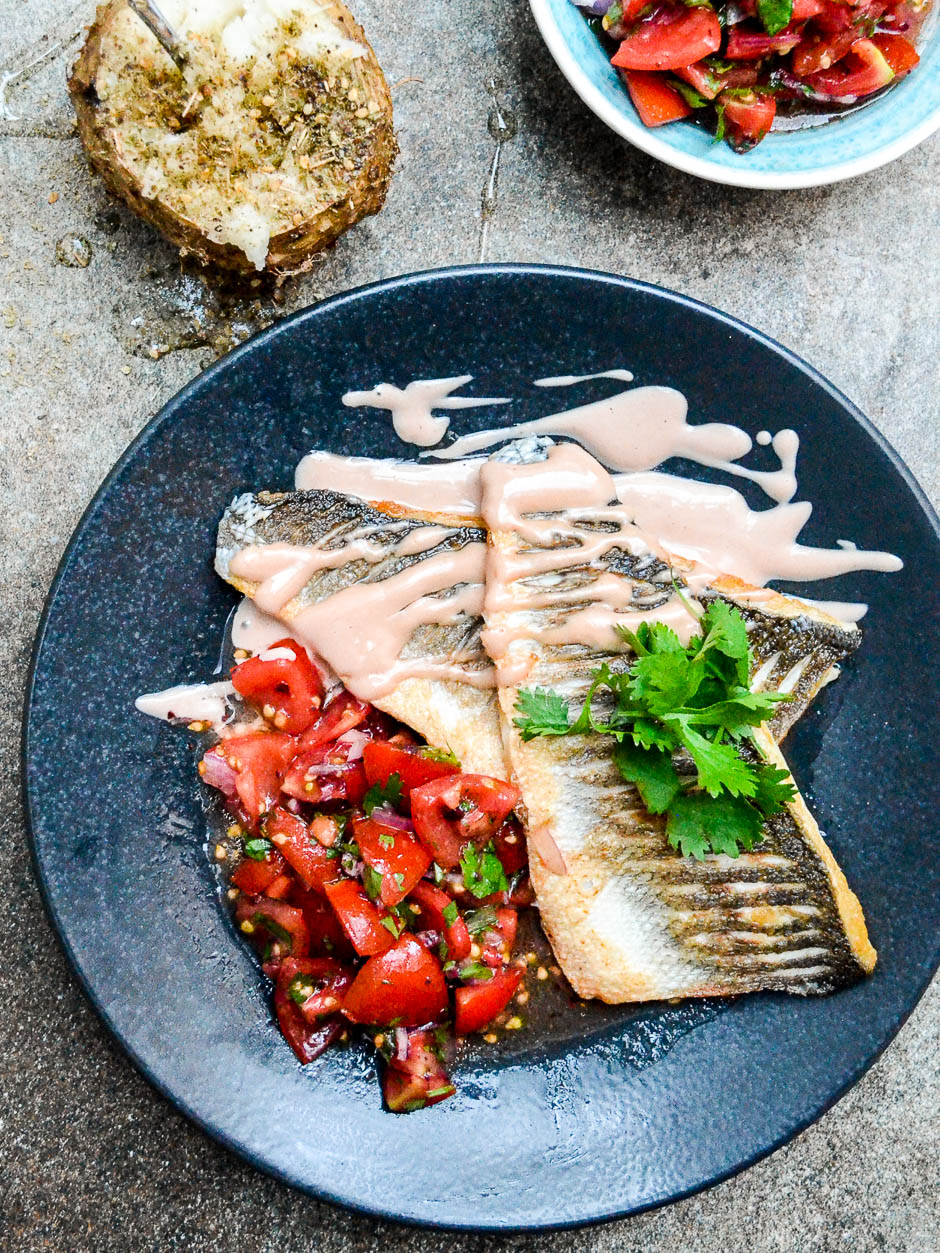
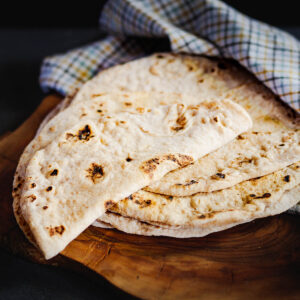
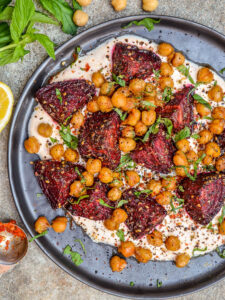
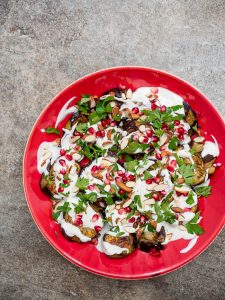




5 responses
Hi your recipe looks delicious. May I ask, can I substitute the potato and instead put sweet potatoes in this recipe? Thank you.
It wouldn’t be traditional and I don’t think I’d do that myself, but there are a few dishes out there with celeriac and sweet potato as its main ingredient, so you could certainly try. Good luck, and let me know how it works out!
Hi Vidar, thank you for your newsletters. They are very informative and entertaining. I have been cooking Turkish for years and got several Turkish cookbooks. Still, I copy one or the other of your recipes like the Zeytinyağlı Kereviz and look forward to cooking it come autumn. I like celeriac and the only recipe I knew so far was celeriac salad, a bit laborious as the celeriac has to be grated. I wish you a happy life in Istanbul. What a beautiful city it is. Turkey is a beautiful country with a kind and hospitable people. Blessings.
Hi Magdalena. Thank you so much for your kind comment! I really appreciate it.
I always forget to leave here a comment, thanks god not today.
after I’ve read this recipe around a year ago I already knew I’d like it but soon it turned out to be my new ultimate favourite winter dish. I cannot tell you how better you made my days with this recipe and I’m not joking. thanks a lot for it, really ♡ it’s perfect.